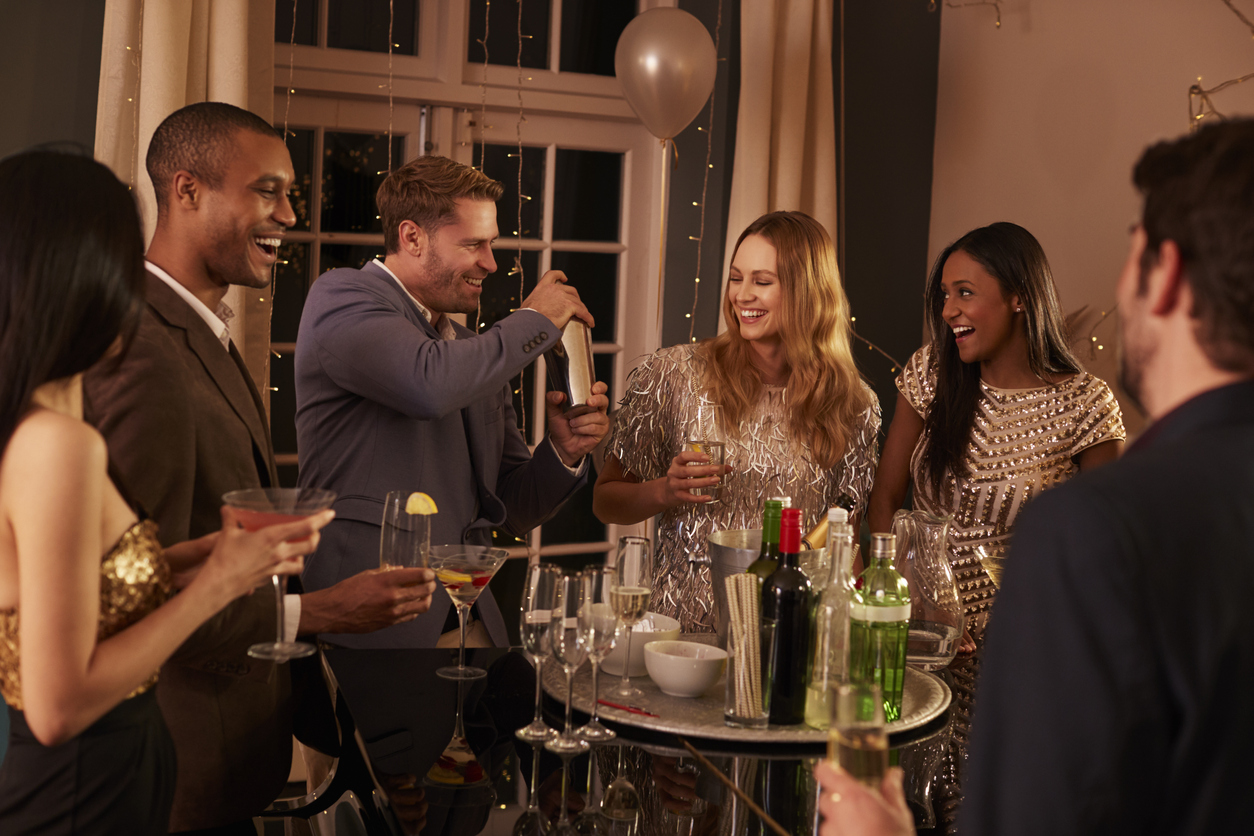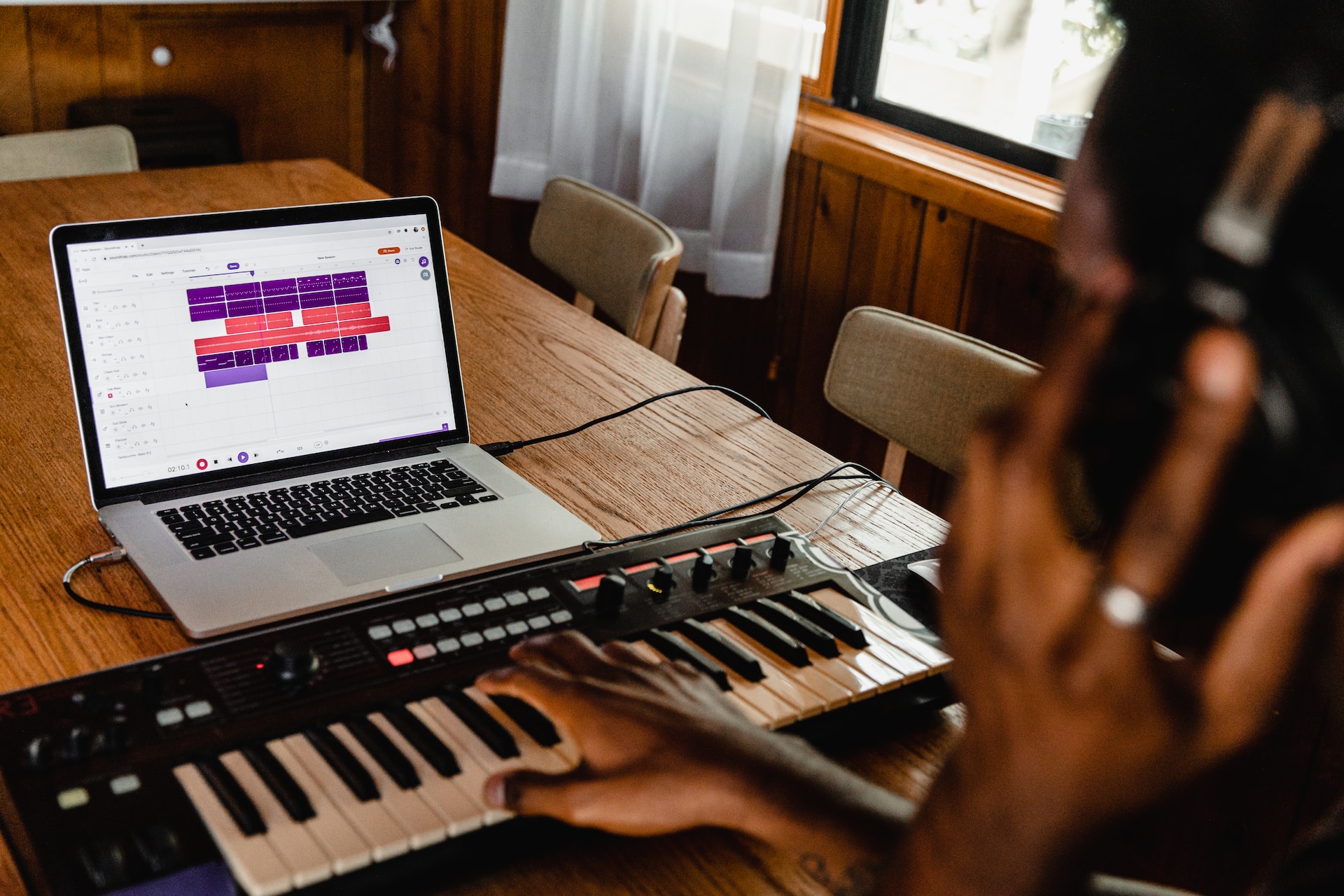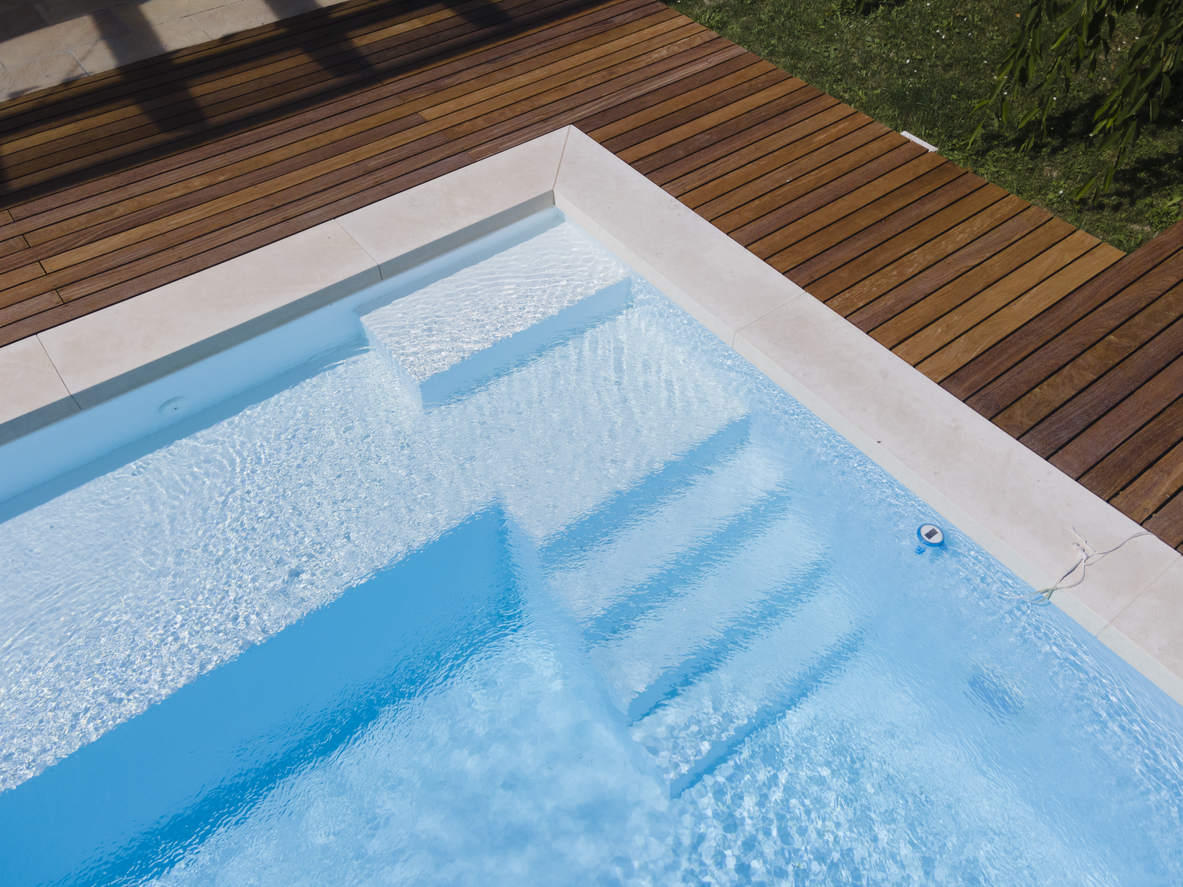Creating your own bar at home can be an exciting experience, especially if you love cocktails, and like having friends and family over all the time. With the holidays just around the corner…we want to make sure you have all the information you need to build and stock your home bar with the best spirits, mixers, bitters, syrups, and garnishes, and why not a couple of delicious cocktail recipes to learn preparing for you and your guests.
We have gathered the best advice from expert mixologists, spirit distillers, professional bartenders, and cocktail makers, to bring you the ultimate advice for you to build a well-stocked bar and be a success, not only in the upcoming holiday season but in all your future gatherings at home.
Which are the basic liquor bottles you recommend buying to stock your home bar?
Stocking a home bar is a good way to ensure you always have a few quality bottles ready to go when you want a drink or when guests arrive. It’s helpful to start with staple base spirits and then build out from there, adding cocktail modifiers or liqueurs that increase your drink-making repertoire.
The basic spirit styles include whiskey, brandy, gin, vodka, rum, and tequila, but within those categories are multiple subcategories, and the possibilities are endless. So, when in doubt, start with bottles you already enjoy drinking. Stocking a couple of different whiskeys is always a good bet—for example, a bottle of bourbon and a bottle of scotch. Next, secure a bottle of dry gin and vodka, which are popular calls in cocktails. Blanco tequila is great for Margaritas, while reposado and anejo tequilas are better for sipping. Think about how you’ll use the tequila, and make your decision from there. Rum works well in cocktails, but aged rums are also good for sipping, and a high-quality cognac or other brandy makes for classy nightcaps.
After your base spirits are stocked, consider adding vermouth to your home bar. Dry vermouth is necessary for Martinis, while sweet vermouth is a vital component of Manhattans. Certain liqueurs like Campari and Aperol increase your cocktail-making options to include classics like the Negroni (gin, sweet vermouth, Campari) and the Aperol Spritz (Aperol, sparkling wine, club soda). Digestifs like Fernet-Branca and Amaro Montenegro are fun after-dinner drinks, though their bitter profiles may turn off some drinkers unused to strong, herbal flavors. Anything in the latter categories are more nice-to-have than mandatory, but if you enjoy drinking a wide variety of spirits and liqueurs, or if you entertain often, it can’t hurt to keep a few interesting bottles on hand.
Lastly, supplement your bar with tonic, club soda, and ginger beer. These simple mixers make easy highballs, like a Vodka Soda or Gin & Tonic, and can also be offered to anyone who’s abstaining from alcohol.
Kevin Gray, from Bevvy
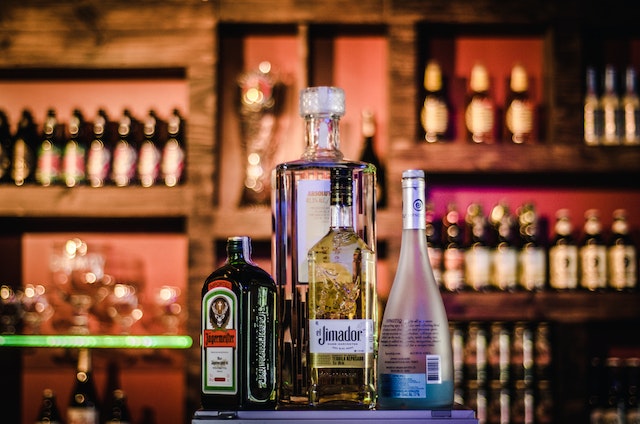
What should I consider having on my home bar buying list for the first time?
When you’re just starting out on the home bar journey, start by buying what YOU like. Your home bar should be a direct reflection of you and your tastes – not what you think you should buy. Once you have your favorites in stock, you can move on to the cocktails you’ve always wanted to make at home.
For liquors you’re unfamiliar with, buy small bottles and build as you go. Don’t overlook the small 2oz bottles in your local liquor store. These are an excellent and affordable way to try something new or pick up a flavored spirit to use in a new cocktail recipe.
Round out your home bar collection with a combination of:
Main spirits (vodka, silver tequila, white rum, gin, whiskey or bourbon),
Liqueurs (orange),
Bitters (aromatic, orange),
Mixers (club soda, cranberry juice, pineapple juice, ginger beer), and
Fresh citrus (lemons, limes, grapefruit).
Last but not least, be sure to have lots of ice on hand when making drinks. Use plenty of ice when shaking or stirring a cocktail, and if a recipe calls for the drink to be served over ice, fill your glass with ice before pouring in the drink.
Katy McAvoy, mixologist at Mitten Girl
Which liquors would you say are a must-have in your home bar that allows you to make a variety of cocktail recipes?
Your general base spirits are usually bourbon, rye whiskey, gin, tequila, vodka, rum, and probably brandy/cognac. There are of course, lots of other modifiers, like liqueurs, vermouths, bitters, etc. But personally, I recommend for people to start with thinking about what cocktails they like, or what cocktails they’ll likely be making for friends, and then just buy the spirits and liqueurs they need to make those specific cocktails. That way you aren’t stocking your bar with a bunch of expensive ingredients you might not use much, or at all.
For example, let’s say you’re like me and you really enjoy Margaritas. In that case, buy a bottle or two of tequila (my favorites are La Gritona and Libélula), some quality orange liqueur (like Cointreau or Grand Marnier), and then all you need is some fresh lime juice and salt. If Manhattans are more your thing, then pick up a bottle of whiskey (I like rye for my Manhattans, so I often go with Knob Creek Rye), some sweet vermouth, Angostura Aromatic bitters, and some Luxardo Maraschino cherries.
A well-rounded bar is nice to shoot for, but don’t feel pressure to buy a bunch of expensive bottles that will only sit there and collect dust. Just get what you need and will use.
Jordan Hughes, from High Proof Preacher
What are the must-have bartender tools you need in a home bar?
- Two stainless shaker cans. You’ll need these to quick-chill and/or shake tasty cocktails!
- Mixing Jar. Essential for mixing and blending flavors and spirits
- Muddler. When you need to express juice from citrus or press herbs, mint, or basil
- Wine Opener. Sometimes there’s no mixing required, just pop the cork and enjoy!
- Sharp Knife. Always better than a dull one. Sharp knives make clean, expert cuts.
- Bar Spoon. Long handled bar spoons are the only way to stir ingredients in tall mixing jars or shaker cans
- Pour Spouts. Choose carefully, different spouts pour at different speeds. Pour spouts make it clean and easy to measure.
- Citrus Peeler/Zester. Sometimes life just needs a little zest! Add a strip or a chunk, zesters and peelers make this easy.
- Ice Pick. When you want to use a block of ice, a good ice pick is the only way to easily chip off what you need.
- GOOD ice. Avoid small cubes or “refrigerator ice”.
- Strainer
- Citrus Press.Easier, cleaner & more efficient than using your fingers.
- Jigger/Measuring device (shotglass or small measuring cup)
- Bar mat or towel. Of course there’s going to be splashes and spills. Keep plenty of fresh, absorbent towels on hand. A bar towel also makes for a good surface to make drinks on top of so there are no puddles on your countertop.
- Appropriate Glassware. The drinks you make are only as presentable as the glassware. Nobody likes drinking martinis out of coffee mugs. I’m not saying I’d never do it, but I swear a cold Martini glass makes it taste better.
- Notebook/recipes. Unless you can remember every recipe with changes and notations, a good notebook is your best friend.
Demitri Pallis, from Demitris
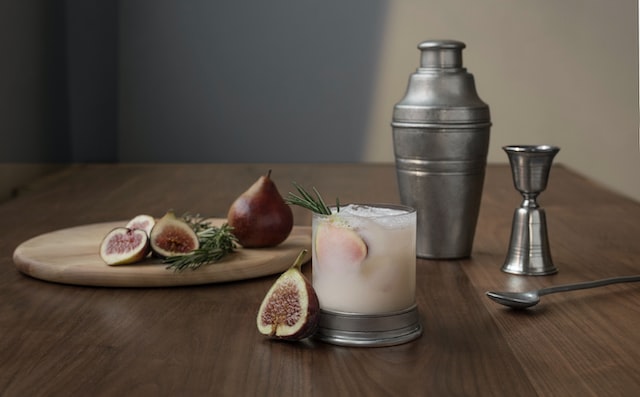
What are the most important bar ingredients I should have in my home bar?
When asked this question, most people will begin spouting off about how you need to have “two bottles of every liquor in your bar” or you need some “20-piece mixer set.”
Well, allow me to dispute that with a resounding cry of “bullsh*t.”
Those suggestions would be useful if you were starting a new bar that was catering to customers. But we are talking about a home bar here. A bar that you will go back to time and time again for your own pleasure.
Go to any home bar in the country where someone bought a bunch of bottles of liquor or mixers because they wanted their bar to look good.
Look closely…
You know what you’ll see? A bottle or two that has been collecting dust for years…
Here’s what I suggest. Think of a couple of cocktails that you love. Think of a handful of cocktails that you would want to learn how to make. Now go out and buy the ingredients you need to accomplish that selection of 5-10 cocktails.
Like Old Fashioned’s? Buy a good bourbon, and now you have not only a go-to cocktail but the base ingredient for other cocktails you might like: Manhattan’s, Mint Julep’s, etc.
It’s better to spend your money on a quality spirit than it is to buy a bunch of bottles you’ll never touch.
And if your friends are upset because you don’t have a spirit they like, tell them to bring it for themselves. It’s the least they could do to host them.
Tom Blake, from Crafty Bartending
What are syrups used for in cocktail making, and which syrups do you recommend to make a wide variety of cocktails?
It really depends on what spirit and type of cocktail you love the most. For example, we make syrups to create the following cocktails: Old Fashioned, Manhattan, Whiskey Sour, Moscow Mule, Whiskey Mule, Mojito, Cosmo, and Margarita to name a few. For years you could find endless syrup options in your package store or market. The majority of those options were made with high-fructose corn syrup, and food coloring and are full of chemicals to mimic the fresh ingredients that should be used in a well-made cocktail. Those have been marketed for decades in the home, bar, and restaurant world. This results in bad cocktails. At Proof, all of our syrups are handmade with not only the most fresh and natural ingredients but also the perfect proportions to make the drink as it was intended to be made and enjoyed. So, the answer to your question is you can either make your own syrup from scratch or buy ours, otherwise, we do not recommend what you can typically find that is classified as a cocktail syrup. To put it another way, it’s like asking me which powdered milk is my favorite. We are the organic and hand fed dairy cow in an ocean of powdered milk.
Brooks Cloud, Founder & CEO of Proof Syrup
Which are your favorite syrups, and vinegars for cocktail making?
Unless you’re mixing drinks multiple times a week for friends and family, I recommend keeping it simple with a few core ingredients that you know you like and have some versatility. Nobody likes stuff gathering dust on their bar.
Bitters – I’d recommend at least having Aromatic bitters (this is the “classic” bitters flavor) and something a bit more playful, but also versatile like Orange or Cardamom bitters. You’ll have the tools to make most classic cocktails, but also a flavor to play around with.
Syrups – A good quality demerara (raw sugar) syrup is great to have on hand because you can use it in anything from an Old Fashioned to a Mojito. Ginger syrup is also quite versatile and easy to use, as well as makes a great base for non-alcoholic drinks.
Vinegars – They are a bit more tricky since they don’t have a long shelf life once open and can often pigeonhole you into one drink. That said a locally made, seasonally flavored vinegar can be a lot of fun to experiment with. Go with the current season and a flavor that really speaks to you like pear cardamom if you’re a whiskey drinker or watermelon cucumber if you’re a tequila lover.
Genevieve Brazelton, from The Bitter Housewife
Which are your favorite aperitifs for having in a home bar?
I have always loved a good aperitif, and once you have indulged in some good Apericena in Italy there’s really no going back. For my personal preferences, I have recently been enjoying and talking about the Espresso Martini, which with the exception of the Negroni Sbagliato (another aperitif cocktail), was probably the hottest cocktail of 2022. Why am I talking about the Espresso Martini though, because the BEST variation (in my opinion) is made with Amaro! The notes of the Amaro both compliment and accentuate the coffee and takes this cocktail to a whole new level. So, my favorite aperitif for the home bar is a quality Amaro, though aperitifs are some of the most overlooked, yet important ingredients you need. For instance, you can’t make a Negroni Sbagliato without Campari, nor a Martini without vermouth. If you’re looking for something low-abv that’s light and refreshing I absolutely love sipping on vermouth and soda, which I was introduced to not long ago. Personally, I like a rosso (sweet) vermouth with a lemon twist. If you want to go alcohol-free, I am a fan of Lyre’s non-alc aperitifs.
These are some specific recommendations below, but I also highly recommend looking up if there is a local product near you to try out.
Amaro: Nonino or Varnelli Dell’Erborista are delicious classic versions. If you want something unique there’s an Amaro from my hometown made by Eda Rhyne, and I’m totally partial to the Appalachian Fernet.
Vermouth: Cinzano 1757 Rosso | Noilly Prat Dry | Dolin Vermouth De Chambery Blanc | Lyre’s non-alcoholic aperitif
Natalie Migliarini, from Beautiful Booze
What are the essential bitters that you recommend to have in a home bar to make a wide variety of cocktail recipes?
As a home cocktail maker, I prefer to keep my bar small and make sure that each product can be used in multiple ways including Bitters. While there are tons of flavors available, just a handful make the cut for a spot on my bar cart. Traditional Angostura Bitters are essential. They are like the salt and pepper of the cocktail world and help to bring out flavors and add depth to a drink. Most classic drinks will call for just a drop or two, but you can also go really heavy for a super interesting, spice-forward flavor profile. I also use a few drops in club soda for a refreshing mocktail idea when it’s not time for something boozy. I always have Lavender Bitters on hand. They are on the sweeter side with a lovely lavender note, so I use them in drinks where I need a little sugar for balance. They’re also great in coffee or tea. If you’re just starting out, Spicy Bitters are a great, easy way to bring heat to any cocktail recipe. And blends from Bittermans can change even a simple 2-ingredient cocktail into something that seems more elevated.
Sharon Garofalow, from Cupcakes and Cutlery
Which are the must-have types of wine, that you can recommend for stocking my home bar?
You don’t need a fancy wine cellar to set up a home bar with the best of the best. With just a few essential wines, you can create an impressive assortment that pairs well with any food and provides a variety for any occasion.
Here’s what we recommend in setting up your home bar!
Red Wines
A must-have red is Cabernet Sauvignon. This full-bodied red has blackberry, cherry, and cedar flavors, which perfectly complements steak or roasted vegetables.
For a lighter and fruitier flavor, try Merlot. Notes of raspberry and plum make Merlot incredibly versatile for pairing with all kinds of dishes—from beef to salmon to vegetarian options.
If you’re looking for something distinctive, Malbec is ideal because it’s spicy and smoky but still light enough to match any meal.
White Wines
Chardonnay should always be included in your home bar selection if you prefer white wines. It’s dry but buttery, which makes it a great choice for lighter fare like salads or seafood dishes.
Pinot Grigio’s unique crisp taste pairs nicely with pork dishes and veggies.
If you want something sweet and tart, Riesling is the answer. It has notes of apple, pear, and tropical fruits like pineapple and mango.
Sparkling Wines
No home bar would be complete without at least one bottle of sparkling wine!
Champagne is a classic for special occasions or celebrations. But if you want something just as delicious but less expensive, Prosecco is the best pick.
Cava is another sparkling wine that pairs wonderfully with hors d’oeuvres or desserts. Its fruity taste, reminiscent of apples and pears, provides some sweetness after dinner.
Setting up a home bar could be simple and affordable. Just get these highly recommended essential wines, and you’ll have an exceptional selection that pairs perfectly with any food!
Whether hosting a dinner party or just relaxing after work, these wines will surely make everyone happy!
Randy Green, from Wine Cellar HQ
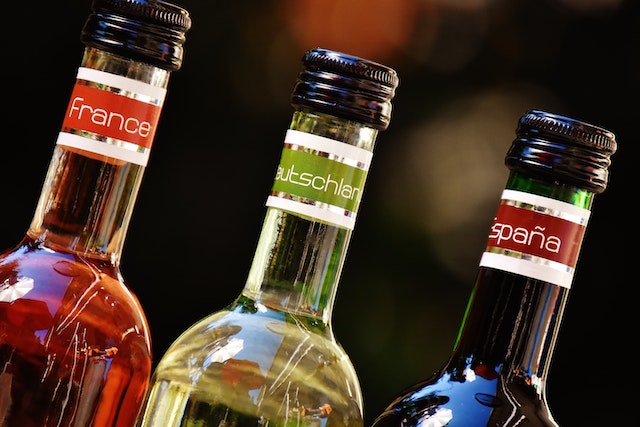
What are the best bartending tips you can provide for making great cocktails at home?
To make extraordinary cocktails at home, there are several steps you can take to ensure that the flavor profiles match what people are accustomed to from bars and restaurants which they may frequent.
First, ensure you have contemporary recipes from a trusted source. If you run the name of a cocktail through any search engine, you’re bound to find multiple recipes for drinks of the same name. Go with the recipe that is an industry standard. That’s what people will expect.
Second, only use quality ingredients. Low cost substitutes for premium liquors are simply not worth the savings.
With that said, it doesn’t make sense to use a $150 bottle of tequila to make margaritas, but go with the best you can afford. Better quality products will impact the flavor of your cocktails enormously and sometimes reduce the chances of stomach upset or hangover symptoms. As an example, when it comes to martinis and manhattans – use quality gin, vodka, whiskey AND vermouth.
If you’re making mixed drinks with cordials – use the call brand products instead of the generic. There is a noticeable difference in flavor among many of them. Typically, they’re cheaper for a reason. It may not always seem as such, but in this case you get what you pay for.
Third, use real glassware to serve your cocktails. Plastic cups simply are not classy and change the overall sophistication of a drink.
Fourth, make sure the ice you use isn’t tainted by “freezer burn” or otherwise impacted by other flavors from food stored within proximity of your ice trays or ice maker.
Fifth, be creative with garnishing and use the freshest fruit and herbs you can get. There are videos on youtube which can you review to cut garnishes with style.
People drink and eat with their eyes before their mouth. Presentation assuredly plays a big part in enjoyment.
Joe Bruno, from American Bartenders School
What are the basic bartending techniques we need to know to prepare our own cocktails?
James Bond didn’t know what he was talking about. When it comes to whether a cocktail should be shaken or stirred, here’s the best rule of thumb: cocktails with all-spirit ingredients—think a negroni or a martini—should be stirred. Shaking them with ice will actually dilute them. Cocktails composed of key ingredients aside from liquor—such as a margarita or anything with egg whites—should be given the cocktail shaker treatment.
On a similar, yet different note: the ice you choose for the end product also matters. A single large ice cube is best for a spirit-heavy cocktail like an old fashioned because it will dilute it less than a bunch of smaller ice cubes. But if you’ve got a mixed drink like a screwdriver or a citrus-heavy cocktail, multiple smaller cubes or crushed ice will do the trick.
Deena Drewis, from Saucey
What is your best advice for making fast, interesting, and easy cocktails at home?
When you’re making drinks at home, you don’t want to spend hours preparing ingredients. Quick and easy cocktails are the way to go, such as a sour, negroni, or an old fashioned. Of course, you still want to ensure the drinks are complex with flavor even though they are quick and easy. And, infusing spirits is one simple technique that can add additional layers of flavor without the hassle. Now, don’t go adding your childhood favorite lolly to a bottle of cheap vodka, that’s reserved for college drinks. Instead, add fruit, tea, syrups, or fat to build flavor into your drinks.
Infusing a London dry gin with earl grey tea for a few hours adds notes of bergamot, citrus, and tannin, which can then be used to make a gin sour variant known as an Earl Grey MarTEAni. Strawberry-infused Campari makes an excellent and brightly flavored negroni whilst infusing whiskey with bacon fat (also known as fat washing) makes a very interesting take on the old fashioned.
Learn more techniques and discover 125 modern and classic cocktails in Steve the Bartender’s Cocktail Guide.
Earl Grey MarTEAni
- 1.5 oz / 45 ml Earl Grey-infused London dry gin
- 1 oz / 30 ml simple syrup
- 0.75 oz / 22.5 ml lemon juice
- 1 egg white
- In a cocktail shaker, combine all ingredients.
- Dry shake (without ice) for 5 to 10 seconds.
- Add ice and shake for 10 to 12 seconds.
- Double strain into a chilled coupe glass.
- Garnish with a twist of lemon.
Steve, from Steve the Bartender
What variety of glasses do you recommend having in a home bar?
Start by choosing beer glasses such as pints or pilsners, which are the most common bar drinkware. A popular beer glass for size and style is the 16 oz. pint glass.
Wine glasses should be your second consideration; wine consumption increased by almost 10 percent from 2020-2021. Proper wine glasses are shaped to give the sipper a pleasant whiff of the vino before tasting. A 10.25 oz. Hexagonal Stem Wine Glass is a good overall choice for red, white, and sparkling wines.
The shot glass is essential for guests who want a small jolt of their favorite whiskey to get the party started. They also are a bartender’s helper when measuring alcohol for mixed drinks. If you’re not sure if you need shot glasses, jiggers or shooters, I suggest the 1.75 oz. Shot Glass for its in-between size and traditional style.
Round out your home bar drinkware with a set of cocktail glasses for mixed alcoholic drinks. Popular styles include 14 oz. Old Fashioned Whiskey Glasses, martini glasses, Moscow mule mugs, and highball glasses.
Cleverly stocked home bars often have a theme based on sports or another interest of the barkeeper. Keep the theme going by customizing your drinkware with a related design or phrase. It’s an inexpensive idea that will take your home bar up a notch.
Shelley Grieshop, from Totally Promotional
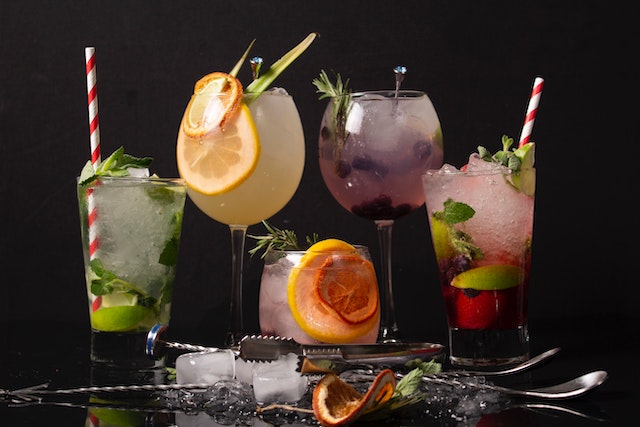
What kinds of glassware do you need for serving different types of drinks?
Good news, you don’t need a huge variety of glassware in your home bar to be able to serve different types of cocktails and drinks.
At the very least, three types of glasses are needed: wine glasses, lowball, and highball glasses.
For wines, you will need 2 sizes of cups. A larger one for red wines and a slightly smaller INAO type glass for white wines. The white wine cups can also be used for sparkling wines and cocktails like Spritz or Fizz.
Another type of glass you will need is a lowball glass. It can be used to serve spirits on ice and short cocktails like old fashioned or gin and tonics.
I also recommend having highball glasses. Larger and taller than lowball glasses, they are very versatile. They can be used for long and mixed cocktails (mojitos, rum and coke, etc.), water, juices, and other drinks.
Then, depending on the type of cocktails you make the most, the space available in your home bar, and your budget, it is possible to add other types of glasses: martini cups, port glasses, moscow mule mugs, beer glasses or balloons for brandy or cognac.
Marie-Noël Ouimet, from Urbainecity.com
Do I necessarily need to install a wet bar at home, what is the difference with a dry bar?
While a wet bar is certainly convenient thanks to the presence of a sink — especially if it’s away from your kitchen — it’s not totally necessary to have in your home. Plumbing can be complicated and expensive to install, so if you desire a physical bar area in your home, consider adding a dry bar instead. A space to create and serve drinks is helpful if you entertain a lot and it can take numerous unofficial forms, such as a pretty bar cart or cabinet. You can still have a dedicated spot for spirits, glassware, and maybe a refrigerator, even without the addition of a sink. Proximity to the kitchen doesn’t have to be an issue if you go with a dry bar or bar cart. Keep a tray or dish bin stowed nearby to transfer dishes to the kitchen, and make sure that a pitcher of fresh water and an ice bucket are available in the bar area when you have guests.
Susannah, from Feast and West
If I want to age my whiskey at home, what is the smallest barrel I can have, and what kind of whiskey is best for aging?
If you want to age whiskey at home, the smallest barrel available is a 1 liter, which will hold about 750ml (a fifth) of whiskey. Since it is the smallest charred oak barrel for aging, it will influence the color and flavor of your whiskey the fastest, giving your whiskey years of age in only weeks or months. Don’t leave it in the barrel too long, though, because you will lose it all to the angel’s share (evaporation). When aging in a 1-liter barrel, you will get great flavor in 1-4 weeks, depending on your taste preference. The best whiskey to age will depend on what you like to drink. Basically, any bourbon, Scotch, Irish, Canadian, or any other kind of whiskey you like will get more flavor in a small, charred oak barrel. You can mix it up and age one whiskey after another for a unique taste. I recently aged a Scotch whisky after I had used the barrel to age Irish whisky for a delicious new favorite. You can also add other infusers to your whiskey barrel, such as cinnamon sticks, vanilla beans, cherries, coffee beans, etc, to infuse some tasty notes into your whiskey.
Steve Mayes, from Red Head Barrels
Which bartending tools do you recommend getting for a more pro home bar (not just the basic stuff)?
Bar tools are essential when creating a home bar, which is why that’s Chapter One in our book Bartending for Dummies (now in its 6th edition). Even pro bartenders need and use the basics, items like a wine opener, cocktail shaker, and strainer. But within each of those categories, the pros tend to use a waiter’s corkscrew (not a fancy – and easily breakable – electric gizmo), a Boston shaker (also known as a two-piece shaker) which is more versatile than a standard cobbler shaker, and a julep strainer. Finally, for a more experienced setup, it’s helpful to invest in a bar spoon, jigger, mixing glass, muddler, and peeler.
Jackie Foley, from Bartender
What must-have whiskey gear do you recommend having in a home bar?
When it comes to having a home bar, there’s no doubt that you’ll want to invest in the best whiskey gear. And if you’re looking for the ultimate whiskey gear, then look no further than wooden cups from SipDark. These cups are perfect for any home bar and provide an elevated experience that will make your home bar stand out.
So, why should you invest in wooden cups from SipDark? For starters, they are crafted with natural wood so each cup is unique and provides a one-of-a-kind drinking experience. No two cups are exactly alike and each cup has its own natural grain pattern – making them both visually appealing and great to hold. Plus, wooden cups also provide a more intense flavor because the wood helps to bring out the natural flavors of the whiskey itself.
Another great thing about these wooden cups is that they’re designed to be extremely durable. These cups are made from hardwood with a special finish on the outside so they can stand up to wear and tear without cracking or breaking apart like other glasses might do. This makes them perfect for long nights of drinking or even travel – as they won’t break if dropped or knocked over!
Finally, these wooden cups also come with an elegant design that adds an extra layer of sophistication to your home bar. Whether you choose a classic style or something more modern, these wooden cups will look great on any countertop or shelf – adding a touch of class and elegance to your space!
All in all, if you’re looking for the must-have whiskey gear for your home bar, then look no further than wooden cups from SipDark! With their unique design and natural materials, these cups will add an extra level of sophistication as well as intensify the flavor of your favorite whiskeys – making them perfect for any home bar setup! So don’t wait another minute – upgrade your home bar today with some stylish wooden cups from SipDark!
Darrell Kramin, Co-Founder at Sip Dark
What is the difference between whiskey and bourbon, and which are the most classical drinks you can make with these?
Bourbon enthusiasts have a saying, all bourbon is whiskey, but not all whiskey is bourbon. Whiskey is a general term that applies to many spirits: Scotch whisky, Irish whiskey, Canadian whiskey, Japanese whiskey – just to name a few. Whiskey is a distilled spirit created from grain. To be called a bourbon, a spirit has to meet very specific criteria. It has to be created from a mashbill (or recipe) of at least 51% corn, it must be made in the United States, it has to come off the still at no higher than 160 proof, it has to be aged in a new charred oak container, and it must go into the barrel at 125 proof or lower. To qualify as a bourbon, nothing can be added to the spirit except water to adjust the proof, and all bourbons must be bottled at a minimum of 80 proof.
Because it is aged in a new, charred oak container, the flavors from the barrel are more assertive in bourbon than other spirits that are aged in used barrels. Generally, bourbon has lots of caramel, vanilla, and baking spice aromas and flavors in it, and compared to some other spirits aged in used barrels, it packs more of a punch on the palate. All of these attributes make bourbon a star in cocktails – it’s a whiskey that can soar above other flavor elements in a cocktail and hold its own.
Bourbons shine in classic cocktails like the old fashioned, the Manhattan, and the mint julep. But they’re also delicious as the base spirit of highball, whiskey sour, and Kentucky mule. When creating cocktails with bourbon, remember that the nose/aroma of the spirit drives the flavor of the spirit. Match flavor elements to the nose of the bourbon you’re using, and use syrups, bitters, liqueurs, or mixers to elevate or match with those aromas/flavors in the spirit itself. Above all, don’t be afraid of using bourbon as a substitute for any classic cocktail that calls for a brown spirit – it works wonders in all styles of drinks.
Heather Wibbels, Whiskey Mixologist at Cocktail Contessa
Which are the different types of whiskeys we can find per region of the world?
Whisky was once the domain of the Scots, so much that a glass of whisky was often called a scotch. Of course, nowadays whisky comes from all over the world. So how does one whisky differ from another? Let’s take a look at the most famous whisky regions worldwide.
Scotland
Scotland is the home of whisky, although the Irish claim to have invented it. There’s a distinction between two types of Scottish whisky: blended and single malt.
Blended whiskies are made by mixing different whiskies from different distilleries together. You end up with a blend, that has the very same taste profile with every bottle. The best-known whiskies like Johnny Walker, Chivas Regal, and Famous Grouse are blended whiskies. A blended whisky is a great blank canvas for your cocktail, although some of them are more outspoken, with smokey flavors. These are enjoyed neat or of course on the rocks.
Single Malt Whiskies are often more expensive and more outspoken in character. They come from a single distillery and carry its name. Glenfiddich, Talisker, Laphroaig, and Glenlivet are all famous single malts. The flavor of a single malt varies from very soft and smooth to pungent, maritime, and smokey. In a blended whisky these flavors are combined to make an easy drink, but in a single malt, they are highlighted. A single malt can be very complex with a long finish. That’s why you don’t add anything to a single malt, maybe just a drop of water. But then again, why not experiment in a cocktail with a great peaty malt like Lagavulin?
Ireland
The Irish add an extra “e” to the spelling, as do the Americans. Whisky in Ireland is often lighter in flavor because the well-known versions are triple distilled. This makes for a smoother and easier whiskey, like Tullamore Dew or Paddy’s. Again, great as mixer or a cocktail ingredient.
United States
Whiskey is made all over the United States, with of course the famous bourbons at the heart. With bourbon whiskies half of the mash bill (the grains used to produce the spirit) has to be corn, which gives bourbon its lovely sweet tones. Bourbon is great neat, on the rocks but also in famous cocktails, like the Manhattan, the Whiskey Sour, and the Old Fashioned. Famous bourbons are of course, Four Roses and Jim Beam. More complex flavors can be found in bourbons like Maker’s Mark, Pappy van Winkle, and Buffalo Trace.
Rye whiskey is another American favorite, where instead of corn larger quantities of rye are used in the mash bill. Rye gives these whiskies their distinct peppery flavor, so if you want a cocktail with a little bit more bit, why not try something like a Bulleit or Knob Creek in your Manhattan?
The rest of the world
Whisky is made around the world nowadays. Japanese whisky is particularly popular now, as they produce very high-quality spirit that often rival the Scottish single malts. Canadian whiskey is also back on track, bridging the Scottish and American styles. And craft distillers from all over the world are producing whiskies with great quality and great taste.
So, do you want to stock your bar? Make sure you have a good Scottish or Irish blend as a base spirit. A great American whiskey is a must-have for those whisky sours on hot summer days. You also want a smokey, peaty whisky in your cupboard for a surprising twist to a Manhatttan. And for those moments where you want to celebrate or contemplate you can’t beat a great single malt. As the Scots would say in the old Gaelic language: slainte máth or cheers!
Sebastiaan Smits, Master Distiller at Loki Distillery and Head of iStill University
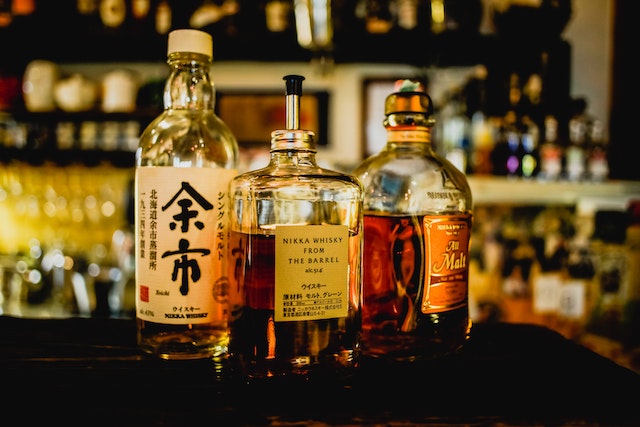
What does it mean when a cocktail recipe calls for “a part”, and can you provide a couple of recipes for the basic cocktails we need to learn to bartend at home?
If you’re like me – when you make cocktails at home you don’t want to do any math! Parts are unspecified measurements that make up an equal part of the total volume. Using parts in cocktail recipes helps us avoid converting imperial to metric system measurements and also simplifies the calculations for larger or smaller batch recipe.
Here’s an example: if a recipe calls for one part vodka and two parts tonic, then you know you have to put double the amount of tonic regardless of the measurement system.
Two cocktails I love to make at home are margaritas and espresso martinis. Below are the recipes I use for each.
Margarita:
- 1.5 oz tequila or mezcal of your choosing
- 3/4 oz Mandarine Napoleon liqueur
- 3/4 oz lime juice
In parts, this would be:
- 2 parts tequila
- 1 part Mandarine Napoleon liqueur
- 1 part lime juice
If you prefer a sweeter margarita, you can also add agave syrup.
Espresso Martini:
- 2 oz vodka of your choosing
- 1 oz espresso
- 1/2 oz Kahlua coffee liqueur
- 1/2 oz Bailey’s Irish cream
In parts, this would be:
- 2 parts vodka
- 1 part espresso
- 1/2 part Kahlua
- 1/2 part Bailey’s
Diana Arellano, VP of marketing at Overproof
Which are your favorite and most interesting cocktails and what do we need to prepare them at home?
A “favorite cocktail” list is hard to pin down. The question usually boils down to “what sounds good today?”
My chosen cocktails seem to follow patterns; in the long run, they turn out to riff on two of the great classic formulas: the Manhattan and the Old-Fashioned.
Those two classics have survived through history because they’re flavorful, they have simple ingredient lists, they’re quick and easy to make, they demand no special techniques, and they provide endless opportunities for enhancement and variation that make the fundamental templates for your imagination and palate. (And it doesn’t hurt that there is a mystery in their origins — always good for party conversation.)
They require little in the way of supplies. The Old-Fashioned, grandfather of all cocktails, is the most straight-forward: it can be made with any spirit you like, but you’ll almost always encounter it as a whiskey drink these days; my choice is bourbon, plus a little sugar and bitters. The Manhattan is rye or bourbon whiskey, sweet vermouth, aromatic bitters, and perhaps a cherry garnish. And of course, there’s ice, lots of ice.
As for gear, you can get by well with a jigger, a mixing glass, a bar spoon, and a cocktail strainer. Glassware is always the fun part: Old-Fashioneds are typically served in tumblers, or “rocks glasses”; Manhattans are traditionally served “up,” in stemmed glasses.
Doug Ford, from Cold Glass
What are the best and most popular recipes you can give us to prepare cocktails with vodka in our home bar?
Our most popular Vodka cocktails this year have been our “Mocha Martini”, our “Dirty Dirty” and “First Kiss”. I have written a brief description as well as a recipe using ingredients available to the home bartender.
First Kiss
The First Kiss is sweet and fruity, with a bit of sour, effervescent, and with an unexpected punch. A great starter cocktail.
- 1 1/4 oz. Copperwing Vodka
- 1/2 oz. homemade grenadine (recipe below)
- 1/2 oz. orange Curaçao (Pierre Ferand Dry Curacao, Cointreau or Grand Marnier)
- 3/4 oz. freshly squeezed lemon juice (strained)
- soda water to fill
- Garnish: Luxardo cherry on a pick
- In a shaker combine, lemon juice, grenadine, vodka, and Curaçao. Add a scoop of ice and shake for 10 seconds. Strain into a highball glass (9-12 oz) filled with ice. Top with soda water and garnish with a Luxardo cherry on a pick.
Homemade Grenadine
- 250g (10 oz) Pomegranate Juice split in half
- 250g (7 oz) Sugar
- 7 g (1/4 oz) Orange Blossom Water (optional)
Take the first half of the juice and reduce it by half by simmering. Take it off the heat and add sugar, stirring. Add the remainder of the fresh juice and stir until fully dissolved. Stir in Orange Blossom Water.
Dirty Dirty
The Dirty Dirty is our house spec of a Dirty Martini, we elevate it by making our own brine, using special olives, and finishing with a small pinch of smoked sea salt.
- 2 oz Copperwing Vodka or Copperwing Gin
- 1/2 oz house olive brine (recipe below)
- Splash (1/16 oz) of Dry Vermouth to rinse the glass (optional)
- 3 Castelvetrano Olives on a Pick
- tiny pinch of maldon smoked sea salt (10-15 grains)
Chill coupe, Nick & Nora, or Martini glass in the freezer for 30 minutes or by filling it with ice and a little bit of water and letting rest for 4 minutes, and discarding the ice water right before pouring the cocktail. Add chosen spirit and olive brine to an ice-filled mixing glass. Stir until very well chilled about 40 seconds. Rinse the chilled glass with dry vermouth, twirling to reach all interior surfaces, and discard the remaining vermouth. Strain the cocktail into prepared glass, place olives on the edge, and add a pinch of smoked salt on top of the olives.
House Brine
- 8 oz Water
- 1 oz White Vinegar
- 1/2 oz Kosher Salt
- Small Jar of Caselvetrano Olives
Combine Water, vinegar, and salt and stir until fully dissolved. Drain jarred brine and rinse olives, then put back in the jar with house brine. Refrigerate for 72 hours. Strain olive brine before use in the cocktail.
Mocha Martini
The Mocha Martini is our house version of the very popular espresso martini. This brings a hint of chocolate to the Vodka and coffee party. Great finisher if you need a pick-me-up.
- 1 1/2 oz Copperwing Vodka
- 1/4 oz Simple Syrup (equal parts sugar and water by weight, shaken until fully dissolved. I like to do this in a small mason jar and use very warm but not hot water)
- 1/4 oz Coffee Liqueur (Mr. Black or another less sweet version)
- 1/4 oz Chocolate Liqueur (Can substitute chocolate syrup if no liqueur on hand)
- 1 oz Cold Press Concentrate or Fresh Espresso
Chill coupe, Nick & Nora, or Martini glass in the freezer for 30 minutes or by filling it with ice and a little bit of water and letting rest for 4 minutes, and discarding the ice water right before pouring the cocktail. Combine coffee, simple syrup, liqueurs and vodka in a shaker filled with ice. Shake hard until ice cold and frothy about 20 seconds. Strain into the chilled glass. Serve with a shot glass of 7 Chocolate Covered Espresso Beans on the side.
Toph Heubach, from Copperwing Distillery
Which are the easiest cocktails recipes you can recommend to make with Gin at home?
Gin is such a beautiful spirit to include in cocktails, with its fresh cleansing palette but with the ability for the distilleries to add subtle flavor profiles to the spirit, it’s becoming a very versatile choice for cocktails. There are a host of simple yet delicious cocktails you can make – the obvious one being the classic Gin & Tonic; just remember to include a decent tonic, or you’ll be wasting an otherwise refreshing delicious drink.
Some of our favorite classics that you can tweak to your palette without worrying about ruining a perfectly balanced concoction would be the Salty Dog; grapefruit juice, gin, and a pinch of salt, or of course the classic Negroni; Vermouth, Gin, Campari.
A 1990’s classic by Dale Degroff is the Fitzgerald, where you sweeten up the gin with lemon juice and sugar syrup, before adding a couple of dashes of Angostura Bitters’s with the gin, shaking it all up with ice before straining.
Just remember whatever cocktails you decide to make, use fresh juices where possible, and enjoy the experience of making it as well as drinking it.
Nick Wilkins, from Make Me a Cocktail
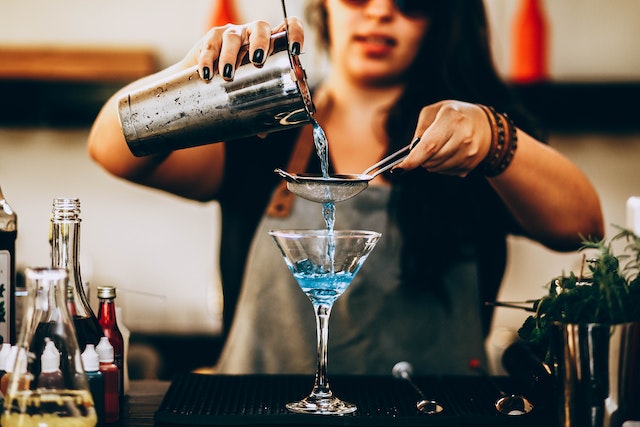
What is the best recipe you can give us to make a Martini at home, and which are your favorite variations?
Welcome to what is potentially the most explosive topic in the world of cocktails: the Martini. Folks are very particular about their Martini preferences. Vodka or gin? Dirty or “clean”? Wet or dry?
There are some universal tenants to a great Martini, and the #1 ingredient is COLD. Make sure your glassware is in the freezer for 10+ minutes beforehand, and make sure you have a lot of clean ice. Because the drink is so polarizing, I’m going to give you my favorite 2 recipes.
Measure 2 oz of gin into a stirring glass and add ¼ oz of fresh Dry Vermouth. Fill the mixing glass with ice and stir vigorously for 2 minutes. Strain into your chilled glass and garnish with a lemon twist.
OR
Measure 2 oz vodka into a shaker and add 1/8 oz fresh Dry Vermouth and 1/8 oz olive brine. Fill the shaker with ice and shake vigorously until your hand goes numb. Strain into your chilled glass and garnish with 1 or 3 olives as an even number of olives is considered bad luck!
Greg Mays, Managing Editor at Simple Cocktails
Which classic cocktail recipes do you recommend learning to prepare at home for having guests over?
The amazing thing about cocktails is that they build off one another. If you develop the knowledge and skills to create “classic cocktails,” then fulfilling your guest’s requests for really any cocktail is quick and easy to do.
For example, if you have the ingredients and knowledge to make the following list of drinks, you have everything needed to make 25+ more cocktails.
- Old Fashioned
- Daiquiri
- Negroni
- Manhattan
- French 75
With that being said though, if you are tending bar for guests, being confident in a handful of drinks will go much farther than having a lot of different cocktails that you sort of know how to make.
Find some cocktails that you enjoy yourself and perfect them. If your guests are so picky that they can’t choose between 3-5 cocktails that you know how to make without even thinking, then they probably aren’t worth inviting over in the first place.
Cheers!
Dillon Newman, from Bartending License Help
What is the difference between a craft spirit and a commercial one?
Given all the controversy on what is, or what is not, a “craft” or “handmade spirit”, this is an attempt to cut through some of the smoke and mirrors that are rife in the industry now.
Rather than depend on regulations, guidelines, labeling, and fairy stories, I propose we use information and disclosure to inform people about craft distilling and how a distillery and its products can be defined or identified as craft.
These talking points will rapidly distinguish a real craft operation (or degree of craft at least) from the Potemkin village type operations that cannot answer these questions:
Materials – Do you grow your own raw material? Is your feedstock grown locally, or at least in your state? Water source, and characteristics, e.g., reverse osmosis, well water, limestone, deep aquifer, glacial melt, lakes or tap water.
Processing – Do you process your feedstock yourself as in malt, grind, press, macerate, or otherwise prepare.
Fermentation – Do you ferment material in-house? If so – fermentation time? special yeasts? music played? agitation? special sugars, or unique aspects to your fermentation? or do you buy already fermented products, e.g., beer or wine type material, and distill it? What types, origins, abv, etc.
Distillation Methods – Any unique points? Hand Bottling or Automated Line? Hand-applied labels?
Aging – Barrels used for aging, different finishes? Length of time, type of storage/warehouse
Any and All Natural/Green/Environmentally Friendly Points – Organic, natural, non-GMO, or local material? Direct from the grower?, Fair Trade, Recycled glass or paper for bottling and labels? Ink (organic?). Any recycling programs for bottles or other waste products?
Employment – How many?, Local ?, Minority, women, veterans etc.?
What’s Your Story? – Who are you? Why do you do this? Do relatives and friends work there? Funding/Capitalization (Life savings, house, credit cards, bank, grants, (if you think it adds to your story or adds sympathy/empathy). Ownership/Principal Investors – Do you own and operate the distillery?
While pictures are worth thousands of words, hard information with pictures is even better! Don’t depend on truth in labeling – depend on truth in disclosure and information.
Christopher Carlsson, from Spirits Review
Which are the different types of whiskeys we can find in the market, and what is the best way to combine each of those in a drink?
Malt whisky: malt whisky – and in particular single malt – is perhaps the world’s most ubiquitous style, made in countries from Scotland and France to Australia and Japan. The ‘malt’ part most commonly comes from malted barley, which gives the whisky biscuity or bready tones. While many believe a single malt should be enjoyed neat, there’s no reason you shouldn’t mix them! Try a Rob Roy (with sweet vermouth) for a spirit-forward drink, or serve it longer with good-quality ginger ale or ginger beer.
Grain whisky: also found around the world, including in Ireland, Canada and Japan, grain whiskies tend to have a sweeter, lighter flavour than malt whiskies and stand up well to mixing. Try lengthening in a highball with soda water, ginger ale, or apple juice.
Bourbon: hailing from the USA, bourbon is a style of whiskey that has to be made with a minimum of 51 per cent corn in its grain bill, which gives it sweet notes like popcorn and butterscotch, and has to be aged in a charred new oak barrel, which provides plenty of woody notes from toasted oak, to caramel, to clove and baking spices. To show off the boldness and sweet complexity of your bourbon, mix it in an Old Fashioned: a simple cocktail with sugar and bitters.
Peated whisky: love them or hate them, peated whiskies are a cornerstone of the whisky market. While they’re most closely associated with the Scottish island of Islay, peated whiskies are now made in other countries including Ireland and America. For a longer drink, try mixing with lemonade or soda water. A lovely way I’ve found to enjoy a lightly peated whisky is to swap it for rum in a Mojito (with mint, lime, sugar and soda). I’ve even known people to sub peated whiskies into a Pina Colada!
Rye whisky: this style has its roots in the northern and midwestern states of the USA, but is also gaining ground in Scotland and parts of northern continental Europe including Finland and Denmark. Rye whisky has a distinctive grassy, herbaceous, spicy character that stands up well to sweeter mixes. Try in a Manhattan with sweet vermouth, or a Boulevardier (the whisky-based version of a Negroni, with sweet vermouth and Campari).
Bethany Whymark, Editor at Whisky Magazine
As you can see, building a bar at home and learning a couple of bartending techniques to prepare your favorite drinks at home is easy, with the proper advice from our experts and bit of practice, you’ll be hosting the best parties in your neighborhood in no time.
